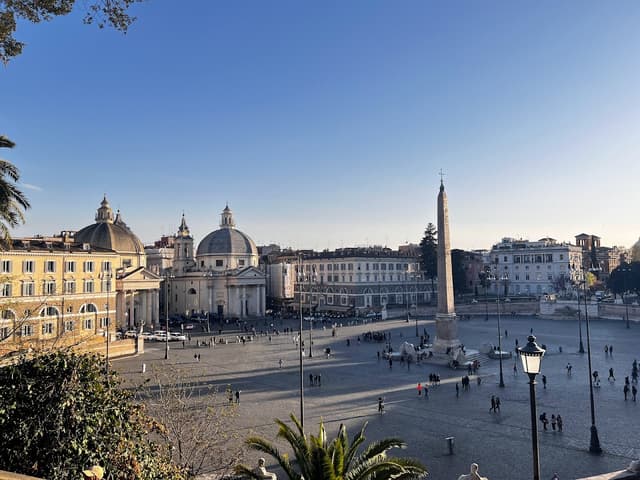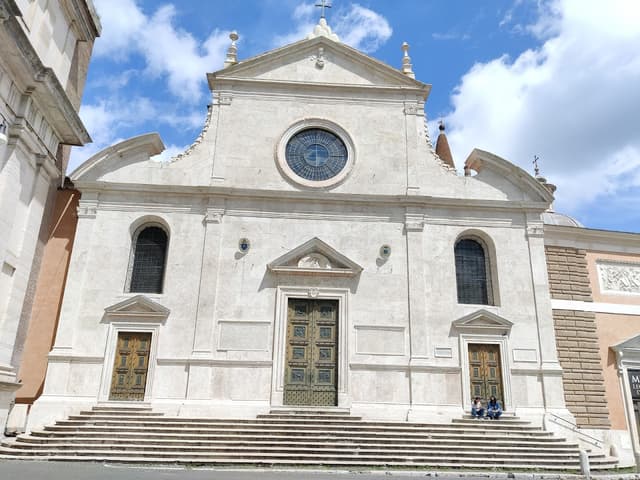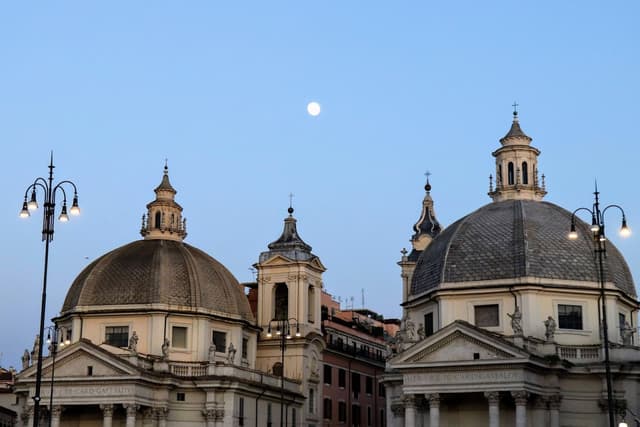🚌 Getting here
The metro line A has stops at Flaminio (Piazza del Popolo) and Spagna (Spanish Steps), depending on when you want to jump into this tour. For those staying in the Prati area, it may be walkable for you (and you could stop at a wonderful gelateria, La Romana, before crossing the Tiber to head into Piazza del Popolo). Bus 119 also has a stop in Piazza del Popolo.
Piazza del Popolo is just inside the ancient gate of the Aurelian Walls, Porta Flaminia, now called the Porta del Popolo. Via Flaminia was built in 220 BC and was the main route connecting Rome to the north, so this was the main gate for many travelers to Rome for centuries.
Piazza del Popolo
@VersoMinistries
Not all obelisks in Rome are Egyptian, but this one is - it was brought to Rome in 1 BC by Augustus and originally stood in Circus Maximus.
There are three churches in the piazza - two of which appear to be twins, but differ slightly while remaining symmetrical.

Details
There are three churches in the piazza - two of which appear to be twins, but differ slightly while remaining symmetrical.
Basilica Parrocchiale Santa Maria del Popolo
@VersoMinistries
Legend holds that Emperor Nero’s corpse was buried here and for centuries after, strange things happened in the area. Pope Paschal II exorcized the area in 1099 and built a small chapel that eventually became this church. Caravaggio’s famous Conversion of St. Paul and Crucifixion of St. Peter can be found inside.

Details
Chiesa Santa Maria dei Miracoli
@VersoMinistries
Over the high altar is an image venerated as “Our Lady of the Miracles,” which gives the church its name. It was originally in a niche near Porta Flaminia.

Details



